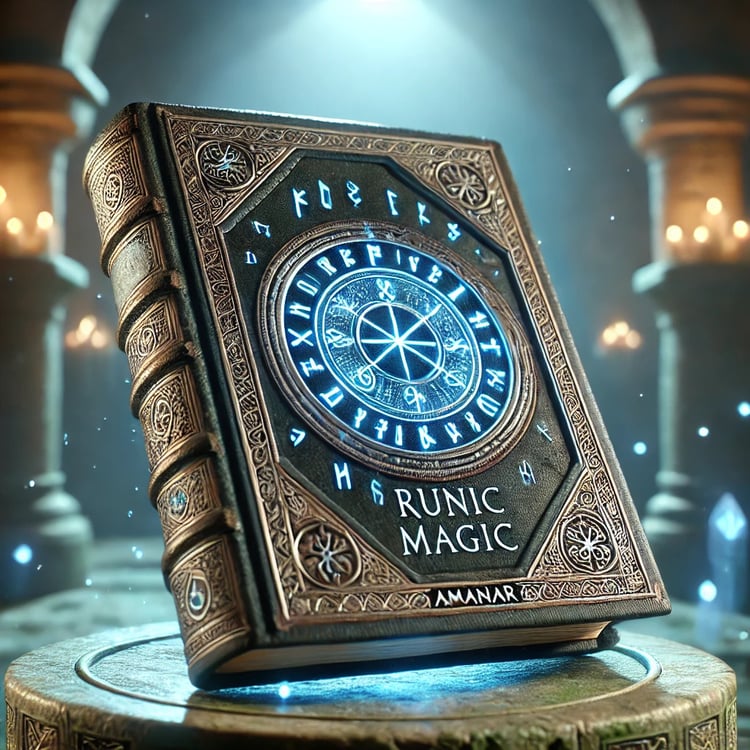
Amanar "Spiritist Seances and Mediums"
Chapter 1. Introduction to the World of Spiritism and Occultism
1.1. Definition and origins of key terms: “spiritism,” “occultism,” “medium”
1.2. Historical background of communicating with spirits and mystical practices
1.3. Goals and objectives of the book: what the reader can learn and how to apply it
1.4. The connection between spiritism and other occult sciences (theosophy, magic, alchemy)
Chapter 2. Historical Roots and Evolution of Spiritist Practices
2.1. Ancient forms of communicating with spirits: shamanism and ancestor worship
2.2. Traditions and rituals of various cultures (Egypt, Ancient Greece, Asia)
2.3. Emergence of classic spiritism in the 19th century
2.4. Contributions of Allan Kardec, Helena Blavatsky, and other founders to the development of this doctrine
Chapter 3. Fundamental Principles and Theory of Spiritist
Communication
3.1. The energetic structure of a human being and the role of the aura
3.2. Types of entities and the spectrum of subtle planes (astral, mental, causal)
3.3. Mechanisms of transmitting information from the spirit world to the medium
3.4. Vibrations, frequencies, and resonance: how contact with another plane is established
Chapter 4. The Medium: Gift and Typology
4.1. Innate and acquired abilities of a medium
4.2. Forms of mediumistic perception: clairvoyance, clairaudience, clairsentience
4.3. Channeling mediums vs. “physical” mediums: what’s the difference
4.4. Ethics and self-discipline of a medium: moral responsibility for the gift
Chapter 5. Preparation for a Spiritist Seance
5.1. Physical tools and attributes: altar, candles, incense, amulets
5.2. Creating a favorable atmosphere: space cleansing, music, vibrations
5.3. Energetic and psychological attunement: meditations, prayers, visualizations
5.4. Choosing a format: individual or group seance – pros and cons
Chapter 6. Traditional and Modern Methods of Conducting Seances
6.1. The classic “talking table” method and the Ouija board
6.2. Automatic writing: technique, nuances, and possible pitfalls
6.3. Trance, channeling, and deeper altered states to connect with spirits
6.4. New technologies: EVP (Electronic Voice Phenomena), IR cameras, apps
Chapter 7. Safety Techniques and Protection during Seances
7.1. Core principles of energetic hygiene and maintaining personal balance
7.2. Cleansing rituals and the practice of exorcism in various traditions
7.3. Creating and strengthening a protective field: shields, amulets, talismans
7.4. The danger of contact with negative entities: how to recognize and avoid
Chapter 8. The Ethics of Mediumship and Moral Responsibility
8.1. Manipulation, fraud, and pseudo-spirituality: what to steer clear of
8.2. Working with vulnerable people: tact in matters of loss, grief, and anxiety
8.3. Karmic consequences: how using one’s gift affects the medium’s own destiny
8.4. Professional ethics and personal principles: the key to safe practice
Chapter 9. Contact with the Deceased and Spiritual Guides
9.1. Purposes and objectives of interacting with deceased loved ones and ancestors
9.2. Ancestor veneration in world religions and magical practices
9.3. Communicating with guardian angels, archangels, and other benevolent beings
9.4. Practices and rituals to honor one’s lineage: strengthening connection to the family egregore
Chapter 10. Analysis and Interpretation of Received Information
10.1. Recognizing the true message: symbols, images, and metaphors
10.2. Techniques to verify authenticity: fact-checking, using clairvoyance
10.3. Psychological filters and projection: how not to mix one’s imagination with a genuine message
10.4. Recording and systematizing results: keeping a journal, audio/video documentation
Chapter 11. Special States of Consciousness in Spiritism
11.1. Mediumistic trance: signs, depth, and methods of entering it
11.2. The difference between conscious trance and spontaneous visions or dreams
11.3. The role of breathing techniques, mantras, and sound in expanding perception
11.4. Spiritist ecstasy and its potential danger: how not to lose touch with reality
Chapter 12. Combining Spiritism with Other Occult Practices
12.1. Using Tarot, runes, and other divinatory systems to clarify messages
12.2. Astrological factors: choosing auspicious timing and planetary influences
12.3. The synergy of ritual magic and spiritism: creating stronger channels
12.4. The alchemical approach to the medium’s transformation during a seance
Chapter 13. Real-Life Cases and Evidence of Mediumship
13.1. Famous historical phenomena and documented results
13.2. Parapsychological and spiritist research in academic circles
13.3. Personal experiences of practicing mediums: lessons, challenges, insights
13.4. Exposés and errors: how to distinguish genuine contacts from self-deception
Chapter 14. Dark Aspects of Spiritism and Potential Dangers
14.1. Possession, attachments, and negative entities: causes and effects
14.2. Psychological traumas of the medium and seance participants
14.3. Fraud and financial scams: why it’s important to verify sources
14.4. Warnings and prevention: how to minimize risks when working with spirits
Chapter 15. The Healing Potential of Spiritism
15.1. Contact with departed loved ones as a way to cope with grief and find peace
15.2. Spiritual therapy: releasing resentments, fears, and inner blocks
15.3. Ancestral work and healing karmic knots through connection with forebears
15.4. The role of spiritual guides and guardian angels in personal growth
Chapter 16. Group Spiritist Practices and Advanced Techniques
16.1. Collective energy and the amplification of effect in group seances
16.2. Conducting a session “through” multiple mediums: coordination and role distribution
16.3. Participation in closed esoteric orders and societies: codes and rituals
16.4. Experimental practice: establishing protocols, recording results, collective analysis
Chapter 17. Personal Growth and Self-Improvement for the Medium
17.1. Developing extrasensory abilities: exercises for clairvoyance and clairaudience
17.2. Working with chakras, Kundalini, and the energetic system
17.3. Meditative practices, yoga, and breathing exercises to strengthen the channel
17.4. Moral and spiritual evolution: how ethics and altruism impact the quality of contacts
Chapter 18. The Future of Spiritism and Conclusion
18.1. Spiritism in the 21st century: popularity, new techniques, scientific research
18.2. Digital technology and virtual reality: new horizons for communicating with spirits
18.3. Responsibility and mindfulness: the importance of an ethical approach in modern times
18.4. Final thoughts: synthesizing tradition and innovation, and a call for responsible use of knowledge
Amanar










